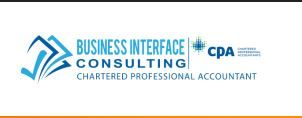A Step-by-Step Guide to Filing Taxes in Winnipeg
BF
Understanding the Basics of Tax Filing in Winnipeg
Filing taxes in Winnipeg can seem daunting, especially if it's your first time. However, with the right guidance, the process can be straightforward and manageable. This guide will walk you through each step, ensuring you're prepared and informed.
Before you begin, it's essential to gather all necessary documents such as T4 slips, receipts for deductible expenses, and any other relevant financial information. Having everything organized will make the process smoother and help avoid any last-minute scrambling.

Step 1: Determine Your Filing Status
Your filing status is crucial as it impacts the forms you need and the deductions you're eligible for. In Winnipeg, most individuals file as single, married, or common-law partners. Ensure you understand your status to maximize potential benefits.
Consider consulting a tax professional if you're unsure about your status or have experienced significant life changes over the past year, such as marriage or divorce. A professional can provide tailored advice suited to your situation.
Step 2: Choose How to File
There are several ways to file your taxes in Winnipeg: online using certified software, through a tax professional, or by mailing a paper return. Using certified tax software is often the most convenient and efficient method. It can help you identify deductions and credits you may qualify for.

Filing Online
Online filing is secure and straightforward. Many software options are available, such as TurboTax or UFile, which guide you through each step. Ensure that the software you choose is CRA-certified for accurate and reliable results.
Using a Tax Professional
If your financial situation is complicated, hiring a tax professional can be beneficial. They offer expert advice and can help minimize your tax liability by identifying all applicable deductions and credits.

Step 3: Calculate Your Taxable Income
Your taxable income determines how much tax you owe. Begin by adding up all sources of income, including employment earnings, investments, and rental income. Subtract any eligible deductions to find your taxable income.
Common deductions include RRSP contributions, childcare expenses, and student loan interest. Ensure you have documentation to support each deduction claimed.
Step 4: Submit Your Tax Return
Once you've completed your return, it's time to submit it to the Canada Revenue Agency (CRA). If filing online, you'll receive confirmation once your submission is accepted. For paper filings, ensure your return is postmarked before the deadline to avoid penalties.

Remember, the deadline for most individuals is April 30th. If you owe taxes and miss this deadline, you may incur interest and penalties on any outstanding amounts.
Step 5: Keep Records
After filing, it's essential to maintain a record of your return and all supporting documents for at least six years. This documentation is crucial in case of an audit or if any discrepancies arise with the CRA.
Store these records securely, whether digitally or physically, to ensure they're accessible if needed in the future.
Conclusion
By following this step-by-step guide, filing taxes in Winnipeg can be a manageable task. Stay organized, choose the right filing method for your needs, and consult professionals when necessary to ensure accuracy and compliance.

